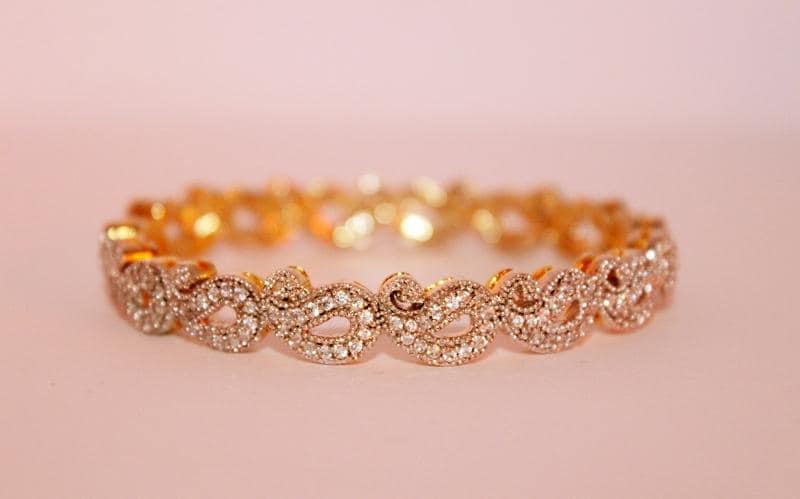There’s only so much you can do to make your jewelry photos stand out. When you’re doing close-ups of items like rings, necklaces, bracelets, and more, focusing on highlighting their intricate details, it’s difficult to add any extra props or accessories without overcrowding your photos.
Still, if you want to add more interest to your jewelry photography, you’ll need something more than just the jewelry itself.
You’ll need an eye-catching background.
The background for jewelry photography can make or break your photos. It can either help you grab the viewers’ attention and bring focus to the details of your product or completely overshadow them and turn away prospective buyers.
Take a look at a few background ideas for jewelry photography to ensure you get things right.
In this article
Why It’s Essential to Have a Good Background for Jewelry Photography
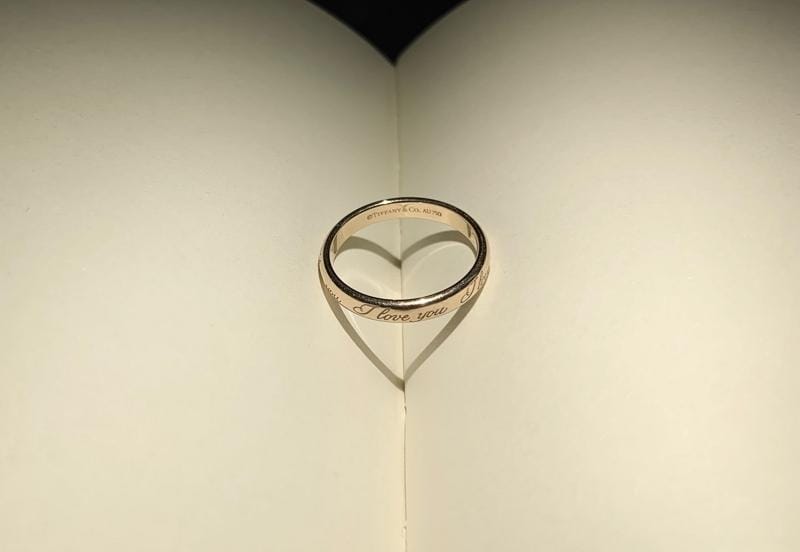
Before we get to the best background for jewelry photography, it’s essential to understand what makes the background so important and why you must pay close attention to it.
Many new photographers believe that the product should be the center of attention—anything else is just a distraction.
Though that belief is certainly founded, the background plays a major role in how well the product looks in the photos.
Backgrounds Help Products Stand Out
The main reason you always need to give as much attention to the background as to the jewelry you’re photographing is that it will make your products pop.
For example, what would happen when photographing a simple white gold necklace and using a simple white background that almost perfectly matches the color of the metal? It would be impossible for the necklace to stand out in such a photo.
It would only blend with its surroundings, not simply failing to grab attention but preventing anyone interested from discerning any details on the necklace.
However, if you used a black background or some other type of contrasting background, the necklace would naturally stand out and demand attention.
More tips:
Backgrounds Give More Context to Your Jewelry Photography
It’s not just that the background helps your jewelry stand out. It also helps create a story about that particular piece of jewelry, putting it in context and, at times, even providing additional information about it.
The background you’re using could inform the audience about how the piece of jewelry was created, for example. It could introduce the audience to the broader set that the piece of jewelry is a part of. If you’re using lifestyle backgrounds, it could even help prospective buyers envision themselves wearing it.
Putting the jewelry in a context like this can help you trigger an emotional response in your audience, making them more likely to convert to buying customers.
The Jewelry Photoshoot Background Helps Display Tiny Details
Perhaps the most important reason you’ll want to be careful with the backgrounds you’re using is that they impact how detailed your photos will be.
The jewelry photoshoot background dictates how visible the minute features will be. As mentioned, if you’re using a white background for white-colored jewelry, your audience won’t be able to discern its details. Everything will simply blend in, making it difficult to see the material, texture, stones used, etc.
With the right background, however, even the least visible detail in real life would be eye-catching in the photos.
8 Background Ideas for Jewelry Photography and How to Use Them
While at first glance, it seems as though you don’t have many creative options for the backdrop for jewelry photography, you’ll quickly find that that’s not the case. Even though you’ll primarily be using close-up photography to focus on the intricate details in the jewelry itself, you can play around with the background to achieve versatile results.
Here are some examples of a creative background for jewelry photography.
1. Material-Specific Background
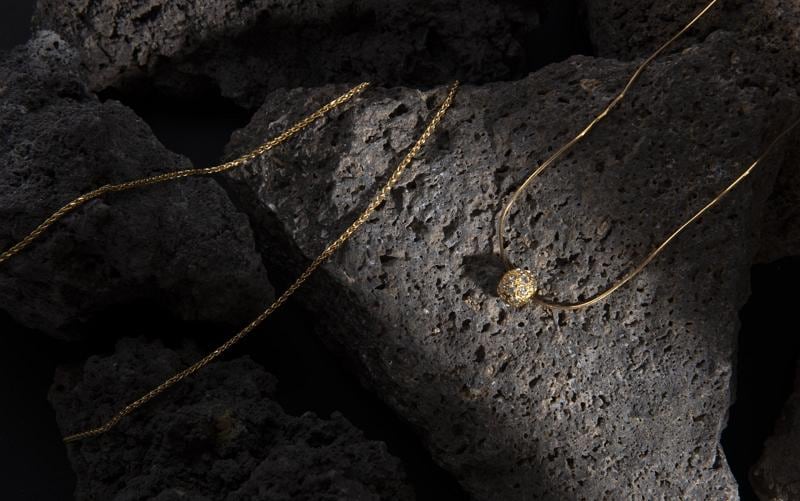
Using natural materials and fabrics in the background of your jewelry photos can make your pieces seem more intricate and refined. You’ll be adding more dimension without putting in any distractions that would take the viewers’ attention away.
The materials can be anything you like, from marble, stone, and wood to metal or sand. As a general rule of thumb, materials like wood will make your pieces appear authentic and handmade, while harsher materials like metal will make your photos look more modern and edgy.
2. Color Combination Background
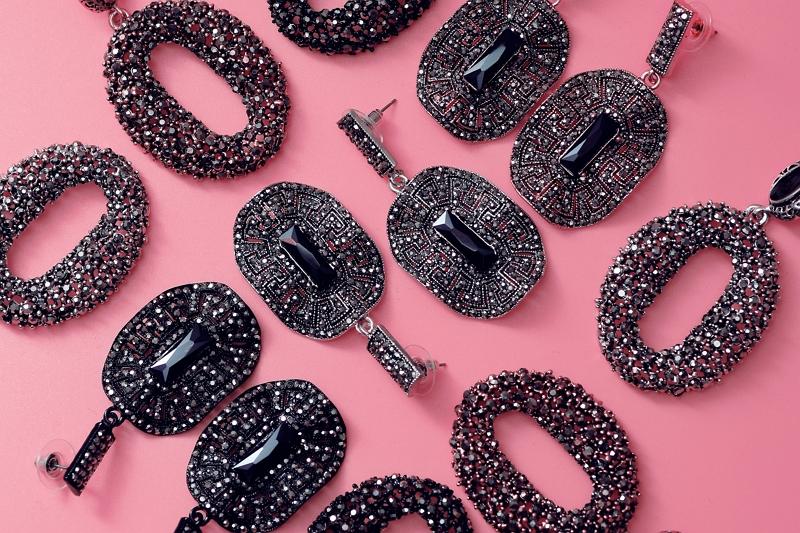
Depending on the type of jewelry you’re working with, using a color combination background could be just what you need to breathe new life into your photos.
If you’re shooting monochrome jewelry, a colored background could make your pieces seem more vibrant and eye-catching. The details will stand out better, and the eye will be drawn to the intricacies of your jewelry.
Alternatively, you could also use colored backgrounds to match/contrast any precious stones that the jewelry has. Amethyst rings could look more moody with a purple background, but if you want the purple of the stone to pop, a nice green background could do the trick.
3. Gradient Background
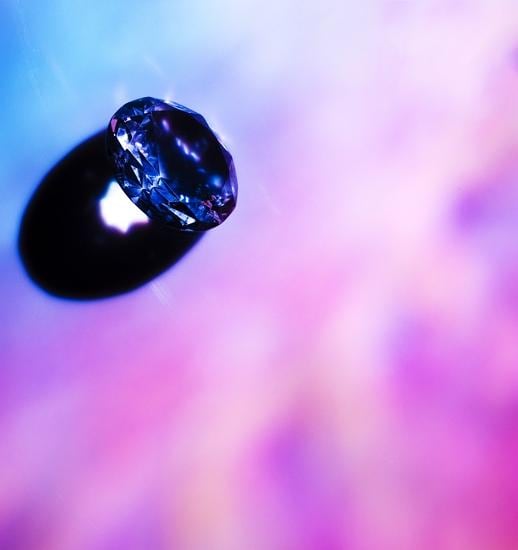
Using gradients is the simplest way to make the background more exciting without risking it becoming too distracting. It gives your jewelry a classy, timeless feel and helps you create more depth without requiring you to use complex props and spend hours setting the stage.
The only thing you’ll have to be careful with when using gradients is where you place your jewelry. Placing it in the darkest part of the gradient could make any crucial details barely perceptible. That’s why you should always strive to position your jewelry right in the middle of the lightest part, regardless of the colors you use in your gradients.
4. Black Background
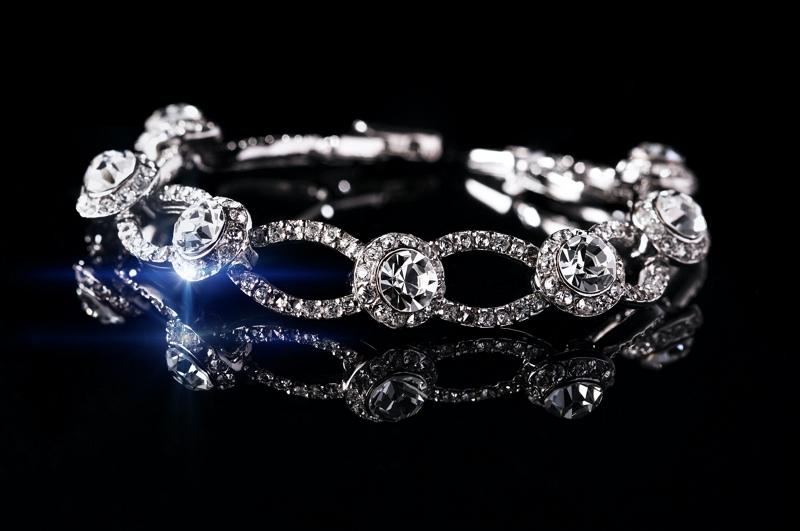
A black background for product photography can create stunning photos. It’s elegant, luxurious, and sophisticated, perfect for platinum and white gold jewelry with clear diamonds. With a black background, you’ll create the ideal moody atmosphere that allows you to highlight any jewelry feature you want.
To make your photos truly pop, use strategic light reflections or place your jewelry on a mirror surface and brighten things up.
5. White Background
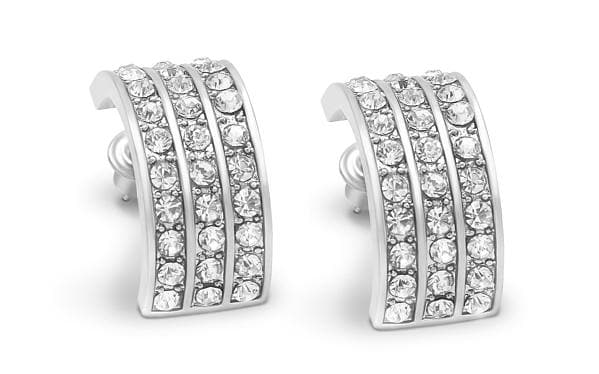
As a general rule of thumb, using a white background isn’t ideal for editorial photography. It can make your jewelry appear plain and uninteresting. However, in product photography, white background is a must.
It’s nice, simple, and minimalistic. It’s what customers expect to see when browsing ecommerce websites for a new accessory they want to add to their jewelry boxes. Moreover, it’s the background that gives you the most flexibility.
It’s much easier to enhance details, improve lighting, color, saturation, and more when working with a light background.
6. Neutral Background
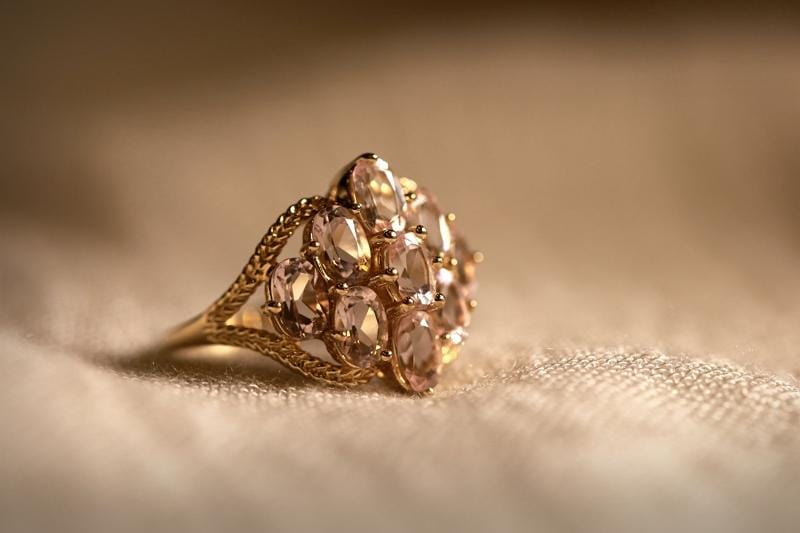
If you still want the clean, sleek design of a white-colored background for your editorial photos, the best thing you can do is use soft, neutral colors. Taupe, beige, cream, gray, and other neutrals can add a bit of warmth to your photos and help your jewelry become more eye-catching.
Ordinarily, neutrals work best with soft-colored gemstones such as pearls, rose quartz, or morganite. However, if you want to soften some of your more vibrant pieces of jewelry like topaz, emerald, or tourmaline, neutrals can work pretty well there as well. Just make sure that you choose neutral shades that complement the gems you’re using.
7. Textured Background
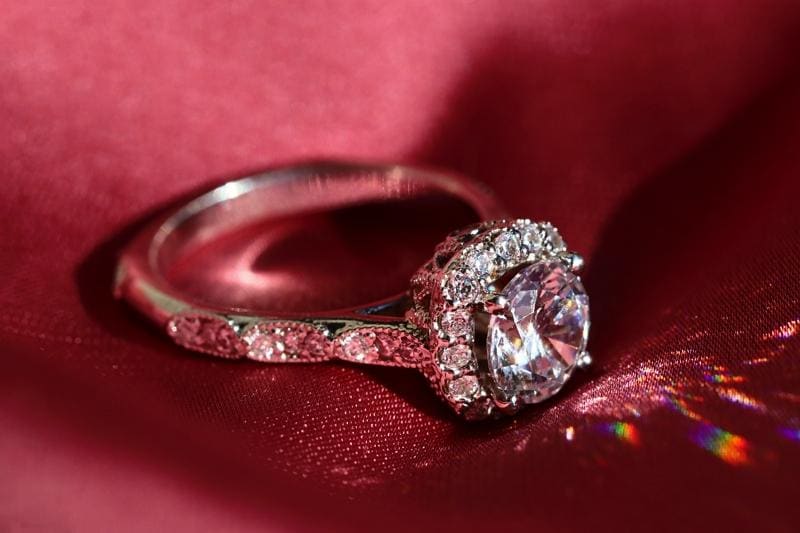
Textured backgrounds add more interest to your jewelry photos without taking the focus away from the products in question.
If you don’t have any luxury materials to work with, using props such as beach towels or plush rugs could add a touch of texture to your photos. You could even use a simple white parchment paper to keep the background neutral while adding more dimension to your photos.
However, if you can splurge a little on more luxurious materials, do so—it will be worth it. Using silk or cashmere for your background will make your jewelry more pronounced and elegant.
8. Mannequin Bust Background
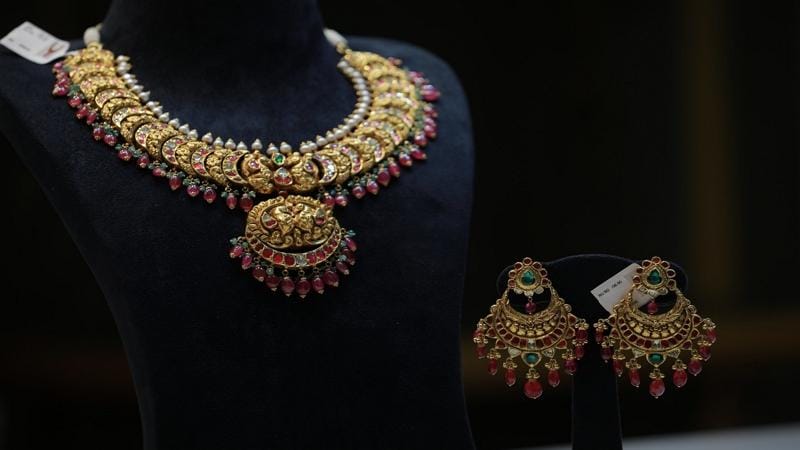
Finally, you can always go the classic route and use a mannequin bust for your jewelry background. It’s especially useful for necklaces as you don’t have to struggle with propping them up and staging them. Simply place the necklace on the bust, and have it lay nicely with all its details and shape perfectly visible.
Alternatively, if you’re working with rings or bracelets, you can simply use a mannequin arm to display your pieces.
It’s nice and easy, but, more importantly, it gives the viewers a better sense of scale and allows them to envision your jewelry’s true size.
More tips:
Create Unique Background for Jewelry Product Photos With AI
In some instances, you can get around using cheap materials like parchment paper for your background. However, if you want to get more from your jewelry photos, you’ll need more versatility.
Fortunately, you don’t have to invest in expensive backgrounds, props, and materials for more versatility. All you need is reliable post-processing software to get the results you’re after.
AI product photography tools like Booth.ai, for instance, enable you to create perfect jewelry backgrounds in just a few seconds during your post-production process. Empowered by AI technology, they can generate jewelry images in a few clicks.
With Booth.ai, all you have to do is:
- Step 1: Upload a plain reference photo of your jewelry;
- Step 2: Fill in the text prompt explaining what results you want;
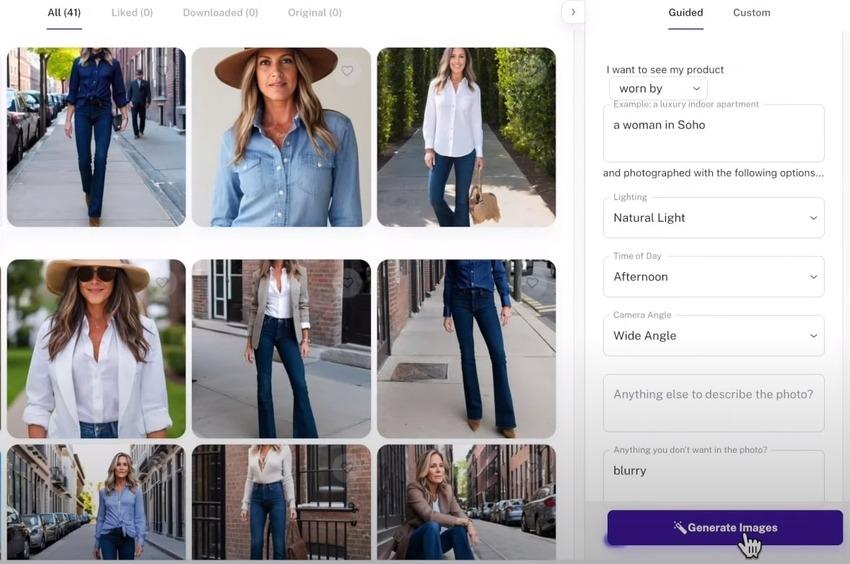
- Step 3: Receive your AI-generated jewelry images.
You can use the AI tool to generate lifestyle jewelry images, add more interest to your background, and ensure your jewelry photos stand out.
Conclusion
Getting the backdrop for jewelry photography just right will help you attract attention and boost sales. While your background should never be your primary focus, you should use it to enhance your photos, highlight the details of your jewelry, and make each photo a true work of art.

